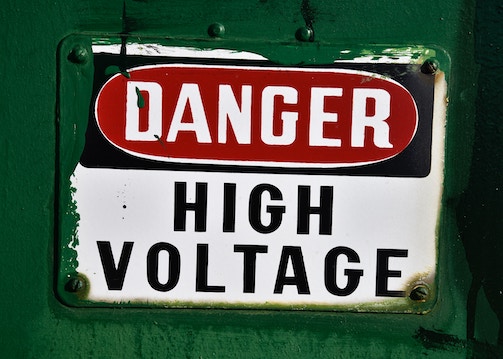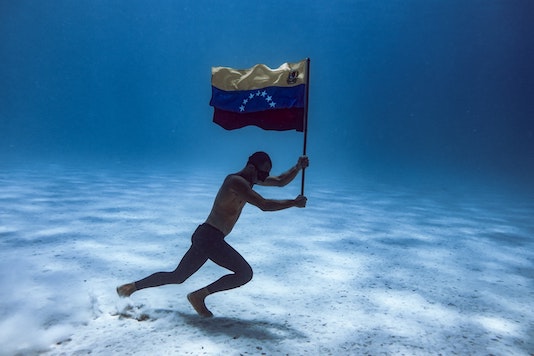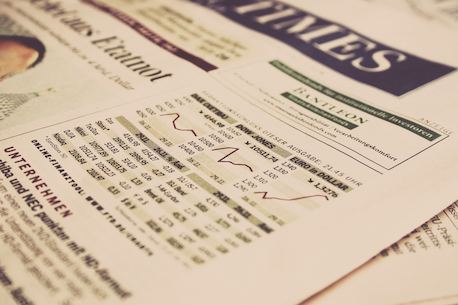A fiat currency is money that is accepted as payment for financial transactions because its value is supported by the government that printed it. The government has declared the fiat currency as legal tender which means it can be used as a medium of exchange. As legal tender, it has the complete backing and full faith of the government.
The United States Dollar and the Euro are prime examples of fiat currencies. Many other governments around the world print their own fiat currency.
A distinction should be made between fiat currency and a commodity currency. They are different. As the term implies, a commodity currency is backed by a physical good or commodity. The most popularly used commodities are gold and silver.
The commodity currency system was extensively used in the past. In some cases, the commodity itself, for example, gold was used as the medium of exchange. Other commodities that were used to support the value of a commodity currency included animal by-products.
FIAT Currencies List
Below is full global list of fiat currencies:
| Country / Territory | Name Of Currency | ISO-4217 Name |
|---|---|---|
| Afghanistan | Afghan afghani | AFN |
| Akrotiri and Dhekelia (UK) | European euro | EUR |
| Aland Islands (Finland) | European euro | EUR |
| Albania | Albanian lek | ALL |
| Algeria | Algerian dinar | DZD |
| American Samoa (USA) | United States dollar | USD |
| Andorra | European euro | EUR |
| Angola | Angolan kwanza | AOA |
| Anguilla (UK) | East Caribbean dollar | XCD |
| Antigua and Barbuda | East Caribbean dollar | XCD |
| Argentina | Argentine peso | ARS |
| Armenia | Armenian dram | AMD |
| Aruba (Netherlands) | Aruban florin | AWG |
| Ascension Island (UK) | Saint Helena pound | SHP |
| Australia | Australian dollar | AUD |
| Austria | European euro | EUR |
| Azerbaijan | Azerbaijan manat | AZN |
| Bahamas | Bahamian dollar | BSD |
| Bahrain | Bahraini dinar | BHD |
| Bangladesh | Bangladeshi taka | BDT |
| Barbados | Barbadian dollar | BBD |
| Belarus | Belarusian ruble | BYN |
| Belgium | European euro | EUR |
| Belize | Belize dollar | BZD |
| Benin | West African CFA franc | XOF |
| Bermuda (UK) | Bermudian dollar | BMD |
| Bhutan | Bhutanese ngultrum | BTN |
| Bolivia | Bolivian boliviano | BOB |
| Bonaire (Netherlands) | United States dollar | USD |
| Bosnia and Herzegovina | Bosnia and Herzegovina convertible mark | BAM |
| Botswana | Botswana pula | BWP |
| Brazil | Brazilian real | BRL |
| British Indian Ocean Territory (UK) | United States dollar | USD |
| British Virgin Islands (UK) | United States dollar | USD |
| Brunei | Brunei dollar | BND |
| Bulgaria | Bulgarian lev | BGN |
| Burkina Faso | West African CFA franc | XOF |
| Burundi | Burundi franc | BIF |
| Cabo Verde | Cape Verdean escudo | CVE |
| Cambodia | Cambodian riel | KHR |
| Cameroon | Central African CFA franc | XAF |
| Canada | Canadian dollar | CAD |
| Caribbean Netherlands (Netherlands) | United States dollar | USD |
| Cayman Islands (UK) | Cayman Islands dollar | KYD |
| Central African Republic | Central African CFA franc | XAF |
| Chad | Central African CFA franc | XAF |
| Chatham Islands (New Zealand) | New Zealand dollar | NZD |
| Chile | Chilean peso | CLP |
| China | Chinese Yuan Renminbi | CNY |
| Christmas Island (Australia) | Australian dollar | AUD |
| Cocos (Keeling) Islands (Australia) | Australian dollar | AUD |
| Colombia | Colombian peso | COP |
| Comoros | Comorian franc | KMF |
| Congo, Democratic Republic of the | Congolese franc | CDF |
| Congo, Republic of the | Central African CFA franc | XAF |
| Cook Islands (New Zealand) | Cook Islands dollar | none |
| Costa Rica | Costa Rican colon | CRC |
| Cote d'Ivoire | West African CFA franc | XOF |
| Croatia | Croatian kuna | HRK |
| Cuba | Cuban peso | CUP |
| Curacao (Netherlands) | Netherlands Antillean guilder | ANG |
| Cyprus | European euro | EUR |
| Czech Republic | Czech koruna | CZK |
| Denmark | Danish krone | DKK |
| Djibouti | Djiboutian franc | DJF |
| Dominica | East Caribbean dollar | XCD |
| Dominican Republic | Dominican peso | DOP |
| Ecuador | United States dollar | USD |
| Egypt | Egyptian pound | EGP |
| El Salvador | United States dollar | USD |
| Equatorial Guinea | Central African CFA franc | XAF |
| Eritrea | Eritrean nakfa | ERN |
| Estonia | European euro | EUR |
| Eswatini (formerly Swaziland) | Swazi lilangeni | SZL |
| Ethiopia | Ethiopian birr | ETB |
| Falkland Islands (UK) | Falkland Islands pound | FKP |
| Faroe Islands (Denmark) | Faroese krona | none |
| Fiji | Fijian dollar | FJD |
| Finland | European euro | EUR |
| France | European euro | EUR |
| French Guiana (France) | European euro | EUR |
| French Polynesia (France) | CFP franc | XPF |
| Gabon | Central African CFA franc | XAF |
| Gambia | Gambian dalasi | GMD |
| Georgia | Georgian lari | GEL |
| Germany | European euro | EUR |
| Ghana | Ghanaian cedi | GHS |
| Gibraltar (UK) | Gibraltar pound | GIP |
| Greece | European euro | EUR |
| Greenland (Denmark) | Danish krone | DKK |
| Grenada | East Caribbean dollar | XCD |
| Guadeloupe (France) | European euro | EUR |
| Guam (USA) | United States dollar | USD |
| Guatemala | Guatemalan quetzal | GTQ |
| Guernsey (UK) | Guernsey Pound | GGP |
| Guinea | Guinean franc | GNF |
| Guinea-Bissau | West African CFA franc | XOF |
| Guyana | Guyanese dollar | GYD |
| Haiti | Haitian gourde | HTG |
| Honduras | Honduran lempira | HNL |
| Hong Kong (China) | Hong Kong dollar | HKD |
| Hungary | Hungarian forint | HUF |
| Iceland | Icelandic krona | ISK |
| India | Indian rupee | INR |
| Indonesia | Indonesian rupiah | IDR |
| International Monetary Fund (IMF) | SDR (Special Drawing Right) | XDR |
| Iran | Iranian rial | IRR |
| Iraq | Iraqi dinar | IQD |
| Ireland | European euro | EUR |
| Isle of Man (UK) | Manx pound | IMP |
| Israel | Israeli new shekel | ILS |
| Italy | European euro | EUR |
| Jamaica | Jamaican dollar | JMD |
| Japan | Japanese yen | JPY |
| Jersey (UK) | Jersey pound | JEP |
| Jordan | Jordanian dinar | JOD |
| Kazakhstan | Kazakhstani tenge | KZT |
| Kenya | Kenyan shilling | KES |
| Kiribati | Australian dollar | AUD |
| Kosovo | European euro | EUR |
| Kuwait | Kuwaiti dinar | KWD |
| Kyrgyzstan | Kyrgyzstani som | KGS |
| Laos | Lao kip | LAK |
| Latvia | European euro | EUR |
| Lebanon | Lebanese pound | LBP |
| Lesotho | Lesotho loti | LSL |
| Liberia | Liberian dollar | LRD |
| Libya | Libyan dinar | LYD |
| Liechtenstein | Swiss franc | CHF |
| Lithuania | European euro | EUR |
| Luxembourg | European euro | EUR |
| Macau (China) | Macanese pataca | MOP |
| Macedonia (FYROM) | Macedonian denar | MKD |
| Madagascar | Malagasy ariary | MGA |
| Malawi | Malawian kwacha | MWK |
| Malaysia | Malaysian ringgit | MYR |
| Maldives | Maldivian rufiyaa | MVR |
| Mali | West African CFA franc | XOF |
| Malta | European euro | EUR |
| Marshall Islands | United States dollar | USD |
| Martinique (France) | European euro | EUR |
| Mauritania | Mauritanian ouguiya | MRU |
| Mauritius | Mauritian rupee | MUR |
| Mayotte (France) | European euro | EUR |
| Mexico | Mexican peso | MXN |
| Micronesia | United States dollar | USD |
| Moldova | Moldovan leu | MDL |
| Monaco | European euro | EUR |
| Mongolia | Mongolian tugrik | MNT |
| Montenegro | European euro | EUR |
| Montserrat (UK) | East Caribbean dollar | XCD |
| Morocco | Moroccan dirham | MAD |
| Mozambique | Mozambican metical | MZN |
| Myanmar (formerly Burma) | Myanmar kyat | MMK |
| Namibia | Namibian dollar | NAD |
| Nauru | Australian dollar | AUD |
| Nepal | Nepalese rupee | NPR |
| Netherlands | European euro | EUR |
| New Caledonia (France) | CFP franc | XPF |
| New Zealand | New Zealand dollar | NZD |
| Nicaragua | Nicaraguan cordoba | NIO |
| Niger | West African CFA franc | XOF |
| Nigeria | Nigerian naira | NGN |
| Niue (New Zealand) | New Zealand dollar | NZD |
| Norfolk Island (Australia) | Australian dollar | AUD |
| Northern Mariana Islands (USA) | United States dollar | USD |
| North Korea | North Korean won | KPW |
| Norway | Norwegian krone | NOK |
| Oman | Omani rial | OMR |
| Pakistan | Pakistani rupee | PKR |
| Palau | United States dollar | USD |
| Palestine | Israeli new shekel | ILS |
| Panama | United States dollar | USD |
| Papua New Guinea | Papua New Guinean kina | PGK |
| Paraguay | Paraguayan guarani | PYG |
| Peru | Peruvian sol | PEN |
| Philippines | Philippine peso | PHP |
| Pitcairn Islands (UK) | New Zealand dollar | NZD |
| Poland | Polish zloty | PLN |
| Portugal | European euro | EUR |
| Puerto Rico (USA) | United States dollar | USD |
| Qatar | Qatari riyal | QAR |
| Reunion (France) | European euro | EUR |
| Romania | Romanian leu | RON |
| Russia | Russian ruble | RUB |
| Rwanda | Rwandan franc | RWF |
| Saba (Netherlands) | United States dollar | USD |
| Saint Barthelemy (France) | European euro | EUR |
| Saint Helena (UK) | Saint Helena pound | SHP |
| Saint Kitts and Nevis | East Caribbean dollar | XCD |
| Saint Lucia | East Caribbean dollar | XCD |
| Saint Martin (France) | European euro | EUR |
| Saint Pierre and Miquelon (France) | European euro | EUR |
| Saint Vincent and the Grenadines | East Caribbean dollar | XCD |
| Samoa | Samoan tala | WST |
| San Marino | European euro | EUR |
| Sao Tome and Principe | Sao Tome and Principe dobra | STN |
| Saudi Arabia | Saudi Arabian riyal | SAR |
| Senegal | West African CFA franc | XOF |
| Serbia | Serbian dinar | RSD |
| Seychelles | Seychellois rupee | SCR |
| Sierra Leone | Sierra Leonean leone | SLL |
| Singapore | Singapore dollar | SGD |
| Sint Eustatius (Netherlands) | United States dollar | USD |
| Sint Maarten (Netherlands) | Netherlands Antillean guilder | ANG |
| Slovakia | European euro | EUR |
| Slovenia | European euro | EUR |
| Solomon Islands | Solomon Islands dollar | SBD |
| Somalia | Somali shilling | SOS |
| South Africa | South African rand | ZAR |
| South Georgia Island (UK) | Pound sterling | GBP |
| South Korea | South Korean won | KRW |
| South Sudan | South Sudanese pound | SSP |
| Spain | European euro | EUR |
| Sri Lanka | Sri Lankan rupee | LKR |
| Sudan | Sudanese pound | SDG |
| Suriname | Surinamese dollar | SRD |
| Svalbard and Jan Mayen (Norway) | Norwegian krone | NOK |
| Sweden | Swedish krona | SEK |
| Switzerland | Swiss franc | CHF |
| Syria | Syrian pound | SYP |
| Taiwan | New Taiwan dollar | TWD |
| Tajikistan | Tajikistani somoni | TJS |
| Tanzania | Tanzanian shilling | TZS |
| Thailand | Thai baht | THB |
| Timor-Leste | United States dollar | USD |
| Togo | West African CFA franc | XOF |
| Tokelau (New Zealand) | New Zealand dollar | NZD |
| Tonga | Tongan pa†anga | TOP |
| Trinidad and Tobago | Trinidad and Tobago dollar | TTD |
| Tristan da Cunha (UK) | Pound sterling | GBP |
| Tunisia | Tunisian dinar | TND |
| Turkey | Turkish lira | TRY |
| Turkmenistan | Turkmen manat | TMT |
| Turks and Caicos Islands (UK) | United States dollar | USD |
| Tuvalu | Australian dollar | AUD |
| Uganda | Ugandan shilling | UGX |
| Ukraine | Ukrainian hryvnia | UAH |
| United Arab Emirates | UAE dirham | AED |
| United Kingdom | Pound sterling | GBP |
| United States of America | United States dollar | USD |
| Uruguay | Uruguayan peso | UYU |
| US Virgin Islands (USA) | United States dollar | USD |
| Uzbekistan | Uzbekistani som | UZS |
| Vanuatu | Vanuatu vatu | VUV |
| Vatican City (Holy See) | European euro | EUR |
| Venezuela | Venezuelan bolivar | VES |
| Vietnam | Vietnamese dong | VND |
| Wake Island (USA) | United States dollar | USD |
| Wallis and Futuna (France) | CFP franc | XPF |
| Yemen | Yemeni rial | YER |
| Zambia | Zambian kwacha | ZMW |
| Zimbabwe | United States dollar | USD |
Fiat Currency: The Risks
Unlike a fiat currency where the value is essentially the faith and credit backing of the government that issues it, the value of a commodity currency is based on the value of the commodity that supports it. Thus, if economic conditions turn sour, the fiat currency will be at danger of losing its value. For example, if a country goes through a period of hyperinflation, the fiat currency could end up worthless.
Case in point is the nation of Zimbabwe. Under the administration of President Robert Mugabe, Zimbabwe’s inflation hit 500 Billion percent in the year 2008. The Zimbabwe Dollar lost its value. How bad was it? One trillion Zimbabwe dollars would have only gotten you US$0.40.

Zimbabwe and Venezuela
Another good example of economic conditions diminishing the value of a fiat currency is Venezuela. Its inflation rate is at 833,997% but is estimated by the International Monetary Fund (IMF) to hit 1,000,000% within a few months.
The Venezuelan Bolivar, similar to the Zimbabwe Dollar, has lost a lot of its value. At the current levels of inflation, 1,000,000 Venezuela Bolivars will only get you US$0.29 – and a cup of café con leche (coffee with milk). In the cases of Zimbabwe and Venezuela, the fiat currency suffered because the government mismanaged its resources.
With Zimbabwe, Mugabe started a land reform program which took away farmland from white farmers and gave them to the country’s black citizenry. Because the black people who were given the land where not experienced in farming, they could not maximize agricultural yield.

Thus, Zimbabwe’s export earnings from the agricultural sector fell. Mugabe and the Central Bank proceeded to print more money to cover the country’s shortfall in paying off its debts. The Zimbabwe government also wanted to use the fiat money to manage rising prices of commodities.
Venezuela’s problems started during the regime of Hugo Chavez. Greed, inexperience, and poor management practices during the first quarter of the new millennium caused Venezuela to miss out on the skyrocketing prices of oil.
Just when the price of oil began to rise in 2007, Chavez became greedy and sought to change the provisions in the refining agreements Venezuela had with foreign oil companies. Chavez wanted to earn more money and demanded that Venezuela’s government – owned oil company take control of the projects.
When the oil companies agreed, Chavez expropriated these companies’ assets. The move incensed the oil companies and kept international refineries away from Venezuela. Lack of expertise in the refining business led to the industry’s downfall. Under Chavez’ successor, Nicholas Maduro, Venezuela’s economy has spiralled out of control. Maduro has proposed a plan to generate $5 Billion by monetizing on Venezuela’s supply of gold.
The United States under President Donald Trump has called for sanctions on Venezuela’s gold and has issued directives prohibiting U.S companies and individual traders from getting involved with Maduro’s proposed “Gold Rush”.
With the fiat currency, its risks are tied in the ability of the government to manage the economy. An economy that is mismanaged will see its currency value drop to a free fall.
Fiat Currency: How It Helps The Economy

In the case of the United States, the fiat currency has proven to be the more valuable type of currency in managing the economy. The Federal Reserve is the central bank of the United States and serves a dual mandate: to keep unemployment levels and inflation rates low. It can manage economic conditions simply by manipulating money supply or the amount of money circulating in the economy.
For example, if the U.S. government decides it wants higher inflation rates, it can print and circulate more U.S. dollars. Keep in mind that the value of fiat money is not tied into any physical good or commodity. This means the government can control its supply as it sees necessary to control specific economic variables.
Other than the inflation rate, the government can manipulate money supply in order to manage interest rates, money velocity, liquidity, and credit supply. Thus, having greater financial flexibility is the biggest advantage of having a fiat currency. The central bank can use money supply to soften the blow of powerful economic shocks.
An example of financial flexibility in action was the 2008-2009 economic crisis which many economists point to as the shining example on how expert management of money supply lessened its impact on the United States’ economy.

There are critics of the fiat currency who believe money that is backed by the value of a physical commodity is more stable. They point to the oil crisis and global recession that hit the 1980s. During that time, the prices of gold soared to record levels What they fail – or forget – to tell you is that once the overall economic situation improved, gold prices collapsed.
In fact, during the Great Depression, U.S President Franklin D. Roosevelt disallowed the practice of converting U.S. money and debt into gold because it could impact the flow of money, business profitability, and made recessions worse. When the link between currency and gold was dissolved, the government through the Federal Reserve was able to effectively manage economic difficulties.
Frequently Asked Questions
Below are some of the most frequently asked questions related to global FIAT currencies:
What Are The Benefits Of Cryptocurrency Over FIAT?
There are numerous benefits of Bitcoin over gold and fiat currency. The most obvious benefit is how easily transportable it is compared with other assets like precious metals or paper bills. It’s also much more durable than traditional currencies because there are no physical notes involved; these can fade away if kept in poor conditions whereas Bitcoins stored on a computer hard drive will last for many years regardless of their environment – especially when backed up regularly as recommended by experts. Not only this but they’re easy to divide into smaller denominations which means you don’t have carry big amounts around with you should your needs require less money (e.g splitting a restaurant bill.)
What Is The Difference Between FIAT & Cryptocurrency?
Fiat money is legal tender, and cryptocurrency is a digital asset. Both are tied to government-issued currencies like the U.S dollar, but unlike fiat money cryptocurrencies derive their value from blockchain technology that’s independent of any central authority or bank.
Conclusion
The bottom line is people tend to hoard high- value commodities such as gold and silver during times of economic crisis which will result in an increase in demand and pricing. A government that runs on commodity currency will then have limited supply at its disposal to try and manage adverse economic conditions. The government will have constricted money flows and will not be able to address large-scale situations.
Fiat currency will allow the government to have greater financial flexibility and have more options at its disposal to help a country navigate through times of great financial difficulty.
